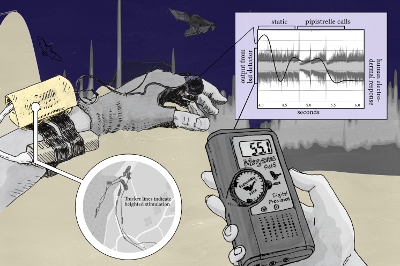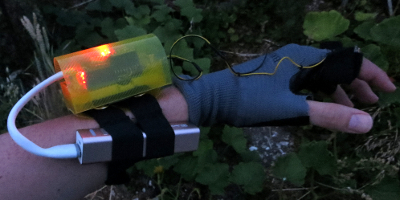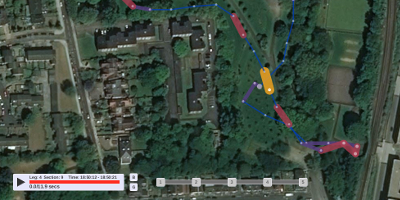


Bat walks are exactly what they sound like – going out for an evening and looking for bats. Bats are unique creatures, improbably long-lived flying mammals who perceive the world principally through echoes of their calls, who live among us often without us even noticing. Appropriately, the technology used to find them is similarly curious, most notably the detectors that allow us to hear their echolocating calls, and much other hidden sound besides this.
My project, Nightsniffing, seeks to intervene into the practice of urban bat walking, and so it is important that I understand people’s experiences of bat walking more fully. I developed a method to explore experience of bat walking from a variety of perspectives, including experienced surveyors, individual explorers and people experiencing bat detection walks for the first time. My experiments, inspired by the biomapping work of Christian Nold and previous work with YoHa, aimed to use a combination of audio recordings of bat detectors, GPS readings and skin conductivity sensors to produce stimulation and sound maps. For this, I developed two main components. The first was a combined GPS/skin conductivity sensor that could be worn while bat walking (and synced to recorded bat detector audio). The second was software that rendered this into an interactive map, allowing participants to recall, relive and reflect upon their experiences of bat walks. This generated insights into how bat walkers respond to their encounters with these unique mammals and relate to bat detection technology.
